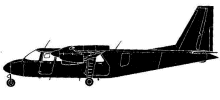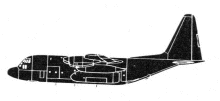Incident Overview

Description
A BN-2T Islander aircraft impacted terrain short of the runway at Kiunga Airport in Papua New Guinea, killing all 12 persons on board. The aircraft took off from Tekin Airport at 13:56 hours local time on a VFR flight to Kiunga. On board were the pilot-in-command and 11 passengers: eight adults and three infants. In addition to the passengers and their baggage, the aircraft was carrying a significant quantity of vegetables. The weather at Kiunga was reported to be fine. As the aircraft entered the Kiunga circuit area, the pilot cancelled SARWATCH with Air Traffic Services (ATS). The pilot did not report an emergency to indicate a safety concern. Witnesses reported that during its final approach, the aircraft suddenly pitched up almost to the vertical, the right wing dropped, and the aircraft rolled inverted and rapidly “fell to the ground”. It impacted the terrain about 1,200 metres west of the threshold of runway 07. The impact was vertical, with almost no forward motion. The aircraft was destroyed, and all occupants were fatally injured. The investigation found that the right-wing fuel tank was empty. There was no evidence of pre- or postimpact fuel leakage. The backing plate behind the fuel selectors was bent during the impact, and had jammed the left selector in its selected position. It appeared that the pilot may have been cross feeding fuel from the left-wing tank to feed the right engine. The aircraft had been reweighed 5 months prior to the accident. The operator had not sought to obtain CASA approval of the new weight and balance data sheet for inclusion in the Aircraft Flight Manual (AFM). There was no evidence that the pilot had computed load distribution within the aircraft. The investigation determined that while the aircraft was within the weight limitations, the load distribution placed it in a significantly aft centre of gravity (c of g) situation for takeoff and landing. The investigation determined that the right engine had failed, probably subsequent to the SARWATCH broadcast, but sufficiently before the aircraft pitched nose up, in order for the pilot to have had time to wind in full nose-left rudder trim to counteract the aerodynamic forces imposed by the failure of the right engine. Contributing factor: The aircrafts centre of gravity was significantly aft of the aft limit. When landing flap was set, full nose-down elevator and elevator trim was likely to have had no effect in lowering the nose of the aircraft. Unless the flaps had been retracted immediately, the nose-up pitch may also have resulted in tailplane stall, exacerbating the pitch up. The wings stalled, followed immediately by the right wing dropping. Recovery from the stall at such a low height was not considered possible. Other factors Other factors is used for safety deficiencies or concerns that are identified during the course of the investigation, that while not causal to the accident, nevertheless should be addressed with the aim of accident and serious incident prevention, and the safety of the travelling public. a) Following the reweighing of SBC, the operator did not make adjustments to account for the shift of the moment arm as a result of the reweighing. Specifically, a reduction of allowable maximum weight in the baggage compartment. b) The pilot, although signing the flight manifest on previous flights attesting that the aircraft was loaded within c of g limits, had not computed the c of g. No documentation was available to confirm that the pilot had computed the c of g for the accident flight, or any recent flights. c) All of the High Frequency radio transmissions between Air Traffic Services and SBC were significantly affected by static interference and a lot of hash, making reception difficult, and many transmissions unclear and unreadable. This is a safety concern to be addressed to ensure that vital operational radio transmissions are not missed for the safety of aircraft operations, and the travelling public.
Primary Cause
Failure to account for the aircraft’s center of gravity and load distribution, leading to a rear-end cofg shift and a potential tailplane stall.Failure to account for the aircraft’s center of gravity and load distribution, leading to a rear-end cofg shift and a potential tailplane stall.Share on:



